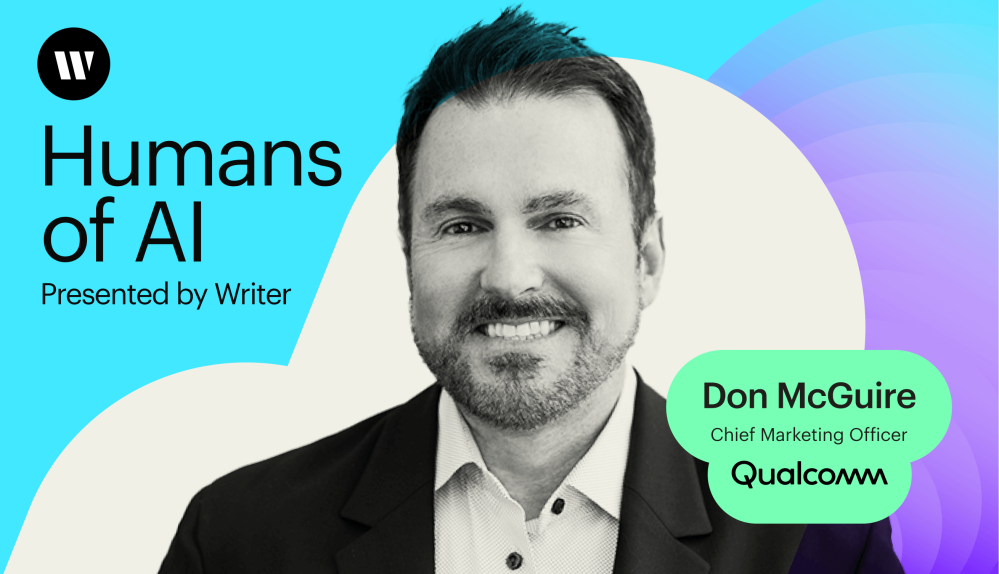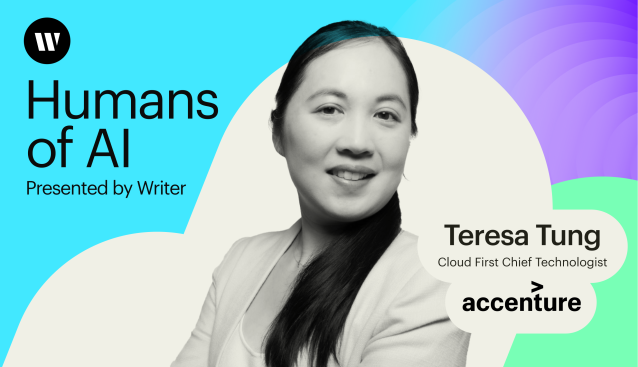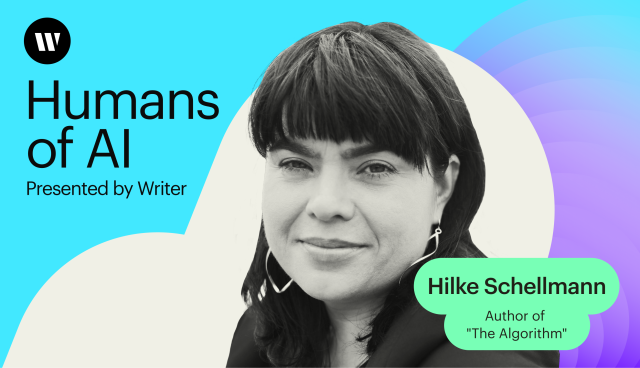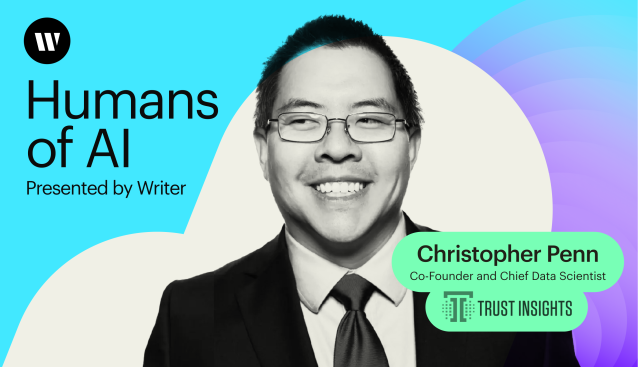Humans of AI
– 8 min read
Tapping into AI as a marketing “sixth sense” with Qualcomm’s CMO Don McGuire

In this episode of “Humans of AI,” Don McGuire, CMO at Qualcomm, a tech giant at the forefront of wireless communications and AI technology joins us. Don’s unique perspective on AI as “augmented intelligence” rather than merely artificial intelligence offers a fresh lens through which we can explore its impact on both business and everyday life.
Qualcomm uses generative AI to not only revolutionize its marketing strategies, but also enhance the customer experience. They’ve been able to channel their excitement around AI into real implementation through the systems and guardrails they’ve put in place for organization-wide adoption.
- Don views AI as augmented intelligence, enhancing decision-making and efficiency as a supportive “sixth sense” or “second brain.”
- AI transforms brand-consumer interactions by making marketing more anticipatory, suggestive, and dynamically personalized.
- Qualcomm proactively adopts AI through a structured adoption model and governance framework, ensuring responsible and effective integration.
- The future of AI in marketing at Qualcomm promises even more contextually relevant and timely consumer interactions.
How grocery aisles shaped Don’s marketing philosophy
As a child, Don was fascinated by product placements and promotional messages when he went grocery shopping with his mother. This early experience in consumer engagement made a lasting impression on him. He’s still fascinated by the way visual and spatial cues can influence people’s choices.
“I loved the way that brands were trying to engage with their customers as that customer wheeled that cart down the aisle,” Don explains. “And seeing products on shelves and seeing messages that were either stuck to shelving or products or banners that were on end caps or stickies that were on the floor of the aisle. I loved merchandising.”
This early fascination with merchandising and consumer behavior became a recurring theme in his life. Don wasn’t sure what he wanted to study when he started college, but a class on consumer behavior sparked his interest in marketing. He soon realized this was the career for him.
“I really fell in love with the psychological side and the emotional side of how to build brand affinity and loyalty and how consumers react and respond to different stimuli, messages, stories, visual cues,” Don reflects. His academic knowledge and real-world experience are the foundation of his marketing strategy at Qualcomm, where he’s exploring how AI can transform modern marketing.
The role of AI in proactive marketing
According to Don, AI isn’t just a technological advancement. It’s both a revolutionary and evolutionary shift in how brands interact with consumers. It diverges from traditional, static marketing methods to become something that’s suggestive and anticipatory.
To give you an idea of what Don means, let’s revisit the grocery store. Traditionally, marketing assets in such settings have been static, but AI introduces a dynamic element. Imagine walking down an aisle, contemplating which cereal to buy. AI can analyze your behavior, consider your preferences, and even suggest products in real time.
“If I spend five minutes contemplating cereal in the cereal aisle what to get, AI can basically help in that process, to decide and or figure out where I’m best positioned to go,” Don explains. “I think that’s the next revolutionary piece of matching consumer behavior, matching needs, behaviors and emotion to product or to discovering and fully vetting a value proposition to see if it attaches to who you are or what you’re doing or what you may want.”
Making customer interactions more contextual
While AI-driven personalized marketing can improve the shopping experience, it can sometimes feel unsettling or intrusive. Imagine you’re chatting with a friend about wanting to buy a couch and then all of a sudden you’re looking at Instagram or Facebook and there’s an ad for Joybird couches. Sound familiar? It can be great, or sort of eerie. And if it’s the future of marketing and customer experiences, how do we make it more useful and less… creepy?
Don says the answer lies in making interactions less random and more contextual.
“I think it has to become less random because the randomness drives the creepiness,” Don suggests. “AI can actually come in to create relevance and timing. So to have AI and other technologies serve up options and choices and places I can go to complete that thought or to move that thought forward is super helpful.”
By ensuring that marketing efforts are relevant and timely, AI can help brands build a more positive relationship with their customers, turning a potential discomfort into a helpful nudge. And while we all know that AI stands for “artificial intelligence,” Don likes to think of it as a more augmented intelligence.
“I really view it as augmented intelligence, as your ‘sixth sense.’ It’s your second brain. It’s that something that could help you continue that journey or complete that thought or, in the case of marketing, make that purchase in a more educated, fluid, and timely fashion.”
The process of implementing AI within Qualcomm
At Qualcomm, the implementation of AI isn’t just about keeping up with technology trends — it’s about leading them. You need a clear process for evaluating AI tools within all relevant departments at your company, which is exactly what Qualcomm does.
“The first thing we did was we developed an adoption model and a governance model that protected us first and foremost and provided a vetting process for AI tools,” Don says. Collaborating with stakeholders from legal, IT, and across the business allowed Qualcomm to methodically evaluate and deploy AI technologies that were best suited for their needs.
With these foundational policies in place, Qualcomm moved quickly to experiment with and deploy AI tools in areas where they would have the most impact. The focus was initially on applications that could enhance the creative processes, such as copy development and visual asset creation. Then, they conducted external training with the AI company and internal training on appropriate ways to use the tool.
“Then we sort of unleashed the tool to the world and we’ve seen adoption curves rise both sequentially and scale based on the effectiveness and the usability of said tool,” Don explains. “We’ve seen scalable adoption in things like Writer because the tool is relevant to a lot of people and a lot of functions and a lot of workflows and a lot of processes. It’s also enterprise grade. The user experience is easy and fast. The Chrome plugin makes it more universally adoptable and usable and it’s really a combination of how ready the tool is to be used by a multitude of people, and then how easy it is for that person to adopt it.”
Creating connections at the speed of TikTok
Anytime you’re dealing with new technology adoption, it’s not all easy-breezy. While AI has offered plenty of benefits to Don and his team at Qualcomm, there’s been challenges too that other companies can learn from.
“We’re seeing everything from super-users to laggards. The laggards are mostly driven by fear and just trying to figure out how to learn a new skill set or how to incorporate the tool into their workflow,” Don explains.
This disparity can create hurdles in achieving uniform adoption across the company. But Don says that with each day that goes by, the advocacy that’s starting to build amongst the super user community is starting to pull the rest of the organization along.
Don believes that, theoretically, AI can help us buy more time. It also allows companies to keep up with a tech landscape that moves at breakneck speed — as 24-hour news cycles are now two-hour news cycles. Positioning AI as a sixth sense in the way it augments work processes is one way to increase adoption.
“When the world is moving at the pace of TikTok, keeping up with engaging your audience with relevant, new, timely content — whether it’s written, whether it’s visual, whatever it might be — is a daunting task,” Don says. “These tools are going to enable us to start to move at the pace of the TikTok generation. I’m excited about that because augmenting the work that we do every day in a way that improves efficiency and productivity and output, but also In a way frees people up to do different things, is the best of both worlds.”
We’ve been living in an age of a lot of disconnection, and finding opportunity and delight in those moments of connection will be a way forward. The people that are going to lead in this age are those that see those connective moments and lean into them — through storytelling, technology, research, marketing … but all of those things demand connection at scale. And that’s where AI can come in.
Want to hear more stories from the humans working at the crossroads of business and generative AI? Subscribe to Humans of AI wherever you listen to podcasts.




